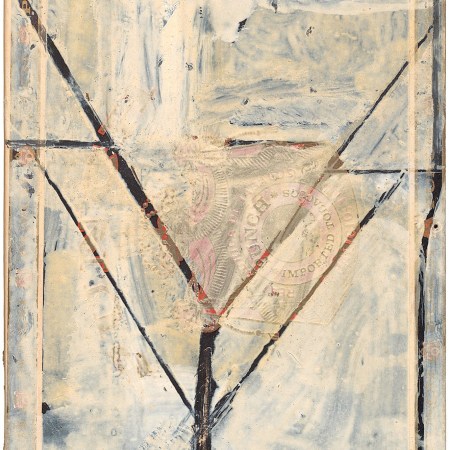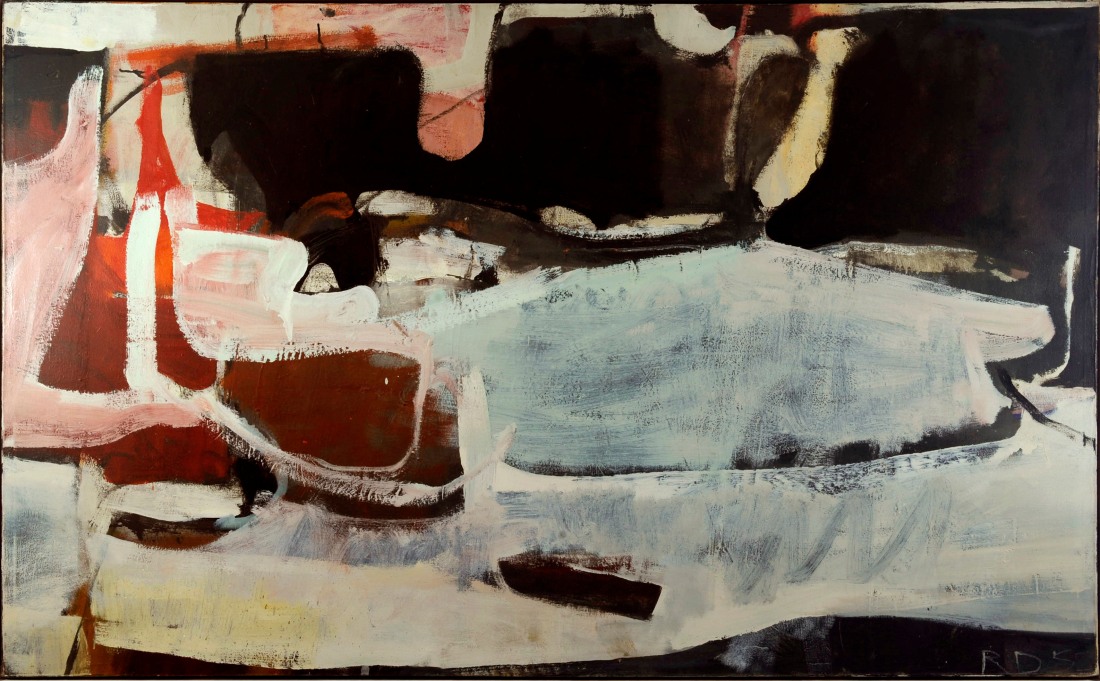
"The idea of space is given to the artist to change if he can. The subject matter in the abstract is space." Willem de Kooning
Across the globe, the period after World War II was a time of intense and lasting artistic change. A recent exhibition, 'Art of Another Kind,' at the Solomon R. Guggenheim Museum explored these early changes as reflected in their collection from 1949-1960. In the preface to the exhibition catalogue, the curators wrote, "The ensuing decade witnessed the awakening of the postwar world...While uncertainty, anxiety, and tension pervaded the social and political arena, this period nonetheless gave rise to an optimistic mosaic of artistic activity based on freedom of expression, spontaneity [and] unorthodox materials."* Artists found conventional techniques and imagery limiting as a means of expression in light of the devastation of the war. In order for art to play a significant and regenerative role, both for the artists, many of whom experienced combat in the war, and also for society, a new visual language needed to be formed. Many of the pioneering artists at the time used the Surrealist method of automatism to tap into their own subconscious to try to articulate a universal truth, and what emerged, on an international level, was a new form of abstraction that challenged the traditional ideas of space, process and aesthetics.
Defying Gravity: The Subject of Space explores the approach and result of this new artistic language by presenting unique juxtapositions among artists who redefined the conventional picture plane. By working in a non-objective language, the artists removed the recognizable subject and instead emphasized the surface of their work and the materiality of the paint. In addition to an international selection of works from the immediate post-war period, the exhibition features four rare paintings by British painter Howard Hodgkin. Hodgkin's paintings, with their compressed yet assertive gestures, textures and all-over layered pigment, operate as both object and image. The paintings are recreations of personal experiences and serve as a visual diary of Hodgkin's life. By painting the frames of his works, Hodgkin subverts the traditional picture plane and creates an architecturally defined object that projects into the viewer's space. Hodgkin reminds his audience that his paintings occupy multiple dimensions, both spatially and temporally.
By flattening the picture plane and expanding the surface area on which they worked, artists like Jack Tworkov and Conrad Marca-Relli worked in an allaround approach. This shifted the focus of the painting activity away from the center of the canvas, activating and equalizing the entire surface. Tworkov's Sirens, (1952) exemplifies this formal innovation with its jigsaw-like composition of biomorphic forms extending across the canvas. Similarly, Marca-Relli achieved his all-around concept through the addition and subtraction of pieces of cut canvas as seen in, The Sentinel (1961). Many of the biomorphic forms are excavated from this collage process much like how an Abstract Expressionist addresses pigment on the canvas.
The notion of "action painting" was as much about the physicality of the paint on the surface of the canvas as it was about the artistic gesture it captured. In Richard Diebenkorn's The Green Huntsman (1952) from his noted Albuquerque series, Diebenkorn plays with the landscape genre by shifting perspective. The Albuquerque series, with its desert inspired palette of rusts, sun-drenched pinks and charred blacks was inspired by an aerial view of the landscape from a lowflying plane. In The Green Huntsman Diebenkorn blends the aerial view of the desert with the artist's aerial view of the canvas as he stood in front of it from various angles. Near the top of the composition, black paint drips upward, capturing a rotation in the canvas as well as Diebenkorn's working process. Across the canvas, Diebenkorn's arm span is traced in a long, uninterrupted arc, documenting the artist's physical presence. Japanese artist Kazuo Shiraga used his body, particularly his hands and feet, to push the paint around on his canvases. The result, as seen in Ryuju-san (1975), is a bold and viscous blend of pigment and recorded energy. The brushstrokes of these works test their allotted boundaries. They are both contained and defiant, adhering to the surface and extending beyond their border.
Other artists in the exhibit include Frank Lobdell, Manuel Neri, Robert Motherwell, Milton Resnick, Emilio Vedova, Esteban Vicente, Brian Wall and Emerson Woelffer.

Richard Diebenkorn
The Green Huntsman
42.75 x 69.5 inches
Oil on canvas
1952